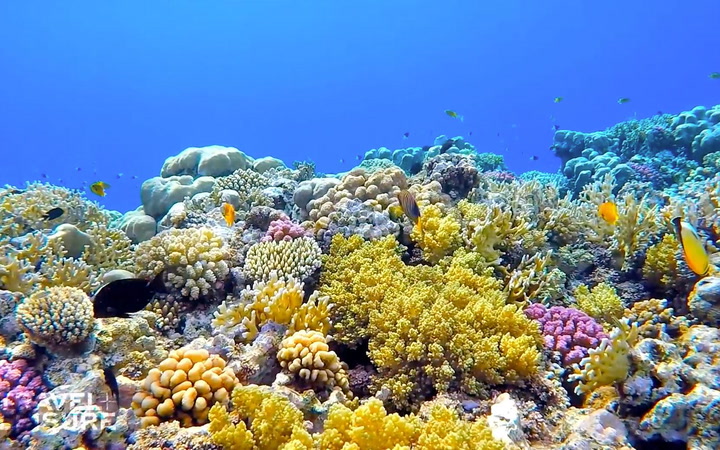A hidden universe of spectacular marine life awaits under the surface and above a 1,400-mile stretch of Australia’s northeastern coastline. Listed as a world heritage site by UNESCO since 1981, the Great Barrier Reef is an awe-inspiring destination that offers visitors a profound connection to nature.
Despite mass coral bleaching events in the summers of 2016 and 2017 that badly damaged parts of the reef, much of the marine park — roughly the size of Japan — continues to thrive. Alarming headlines across the globe may have deterred tourism, but with over 2,900 individual coral reefs and 300 continental islands, a visit to the largest living structure on Earth remains an unforgettable experience.
Over recent years, coral has regenerated, and local scientists have developed innovative ways to foster coral growth both in and out of the water. However, the fragile ecosystem needs human help to maintain its current beauty, and experts are calling for a collective approach to face the challenges posed by factors like climate change. Therefore, tourists must make well-informed choices to enjoy the reef’s stunning attractions without contributing to its decline.
Choosing Eco-Friendly Tours
When visiting the Great Barrier Reef, prioritizing a responsible tour operator is essential. The simplest way to do this is to look for businesses certified by Ecotourism Australia.
The organization’s Green Travel Guide makes it easy to find environmentally minded companies. Options range from breathtaking Air Whitsundays scenic flights, where you’ll spot iconic Heart Reef and the turquoise swirls of Hill Inlet, to Adrenaline Diving day trips to SS Yongala, where you can dive among manta rays and schools of barracuda at a 108-year-old shipwreck. Travelers can enjoy unforgettable experiences while ensuring their presence is beneficial to the ecosystem.
Understanding Eco Certification
What does it mean for a company to have eco certification? According to Ecotourism Australia chief executive Rod Hillman, the certification program involves a comprehensive sustainability matrix, making it essential for businesses to not only avoid harm but actively improve their environment. Each certified company must demonstrate its commitment to conservation and community engagement.
For those eager to enhance their contribution to the reef’s health during their visit, many activities promote citizen science, which is crucial to coral restoration projects along the reef.
Johnny Gaskell, a marine biologist at Daydream Island, emphasizes the importance of citizen science. His team propagates coral in nurseries built within the marine park and custom tanks, ultimately planting the corals back into damaged sites. “We want people to visit the region, go to the sites we’ve recovered, take photos, and share them,” Gaskell noted.
Marine Biology Opportunities
At Lady Musgrave Island, tourists can take on the role of a marine biologist for the day. Visitors learn how to identify various species and their importance to reef health while collecting data through the Eye on the Reef and Coral Watch programs, according to master reef guide Natalie Lobartolo.
Activities offered by Lady Musgrave Experience, an eco-certified tour operator, include guided island walks and snorkeling, along with the chance to swim with turtles. “Lady Musgrave is truly unique because it features a vast lagoon that serves as a massive natural swimming pool,” Lobartolo explained.

The calm, protected lagoon creates an ideal environment for marine life to reproduce. “If nature were to create the perfect nursery in the ocean, it would be Lady Musgrave lagoon,” Lobartolo added.
Young marine animals remain in the safe lagoon until they’re strong enough for the open ocean, where challenges abound. “During nesting periods, females are often exhausted, making the lagoon a preferred resting place,” Lobartolo explained, adding that there are also natural “cleaning stations” in the area.
“These cleaning stations are outcrops of live coral,” Lobartolo noted. “Inside these live coral, many small fish, especially ‘cleaner wrasse,’ live. They remove algae and parasites from the turtles’ skins and shells.”
Fortunately for the turtles and the cleaning fish, the coral at Lady Musgrave is healthy. Lobartolo stated that “the Southern Great Barrier Reef is pretty special and largely avoided the bleaching events in 2016 and ’17.”
Notable Places to Stay
Another noteworthy spot in the southern part of the reef is Heron Island, which features an eco-certified hotel allowing guests to enjoy the island’s natural wonders without sacrificing comfort. The University of Queensland’s Heron Island Research Station provides tours for island guests.
For those seeking a more indulgent vacation, eco-friendly options are also available at all-inclusive resorts. Nestled on an island off the coast between Townsville and Cairns, Orpheus Island Lodge offers understated elegance, featuring meals from award-winning chefs and a spa for relaxation after snorkeling adventures. This high-end, solar-powered resort is eco-certified and contributes to the Reef Keepers Fund, donating $50 AUD per guest to support regional environmental initiatives.
With a well-researched itinerary for this stunning corner of the world, responsible tourism can help combat ongoing challenges faced by the region. Each visitor pays a small $6.50 AUD environmental management charge, which directly funds reef management efforts. In this way, visitors contribute positively to the reef’s well-being simply by being present.
“You can witness signs of the reef’s recovery,” Lobartolo noted. “It’s incredibly resilient and has a strong desire to grow… but we must provide it with the right conditions.”
Getting There
Cairns is recognized as the gateway to the Great Barrier Reef. Some international airlines operate direct flights to the city, and it is a two-and-a-half-hour flight from Brisbane, the capital of Queensland.
Daydream Island and the Whitsundays are accessible via Hamilton Island, a one-and-a-half-hour flight from Brisbane.
The Lady Musgrave Island experience departs from Bundaberg, only a one-hour flight from Brisbane.
Visitors can reach Heron Island from Gladstone, approximately a one-and-a-half-hour flight from Brisbane.
Orpheus Island is accessible via helicopter from Townsville, which requires a two-hour flight from Brisbane.





